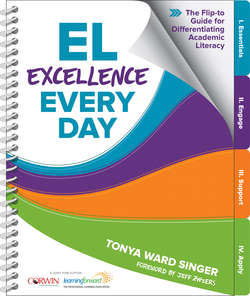Читать книгу EL Excellence Every Day - Tonya Ward Singer - Страница 36
На сайте Литреса книга снята с продажи.
Actions to Live the Mindset 1. Pronounce Students’ Names Correctly
ОглавлениеOne easy and essential way to value students’ diverse backgrounds is to pronounce students’ names the same way their families pronounce their names. This is critically important as our names are our identities. We create a disconnect between home and school when we mispronounce a student’s name. For example, a student I worked with as a reading specialist was named Abel (pronounced “ah-BELL” in Spanish, by his family and community). I met him via a family reading club, so I learned his name from his mom. In his classroom, when I called him Abel, he looked mortified. He corrected me to say Abel (ˈābəl) the way his English teachers had called him since the first day of kindergarten. At school, he felt ashamed by the sound of his own name.
This is a disconnect we can prevent easily by making it a norm for every teacher at every level to learn how students pronounce their names. When a name comes from a language you don’t speak, pronouncing the name correctly may take several tries. Instead of changing the name to what you can say easily, dare to listen, try, fail, listen, try, and fail as many times as it takes to get it right. In addition to learning names, you model the linguistic risk taking that is essential for learning a new language.
Start the year with a project for all students to research the story of their names. Have students interview family members to learn: Where did the name come from? What does it mean? Have students discuss and/or write to share their name stories along with the pronunciation (and/or nicknames) they want you and peers to use.
